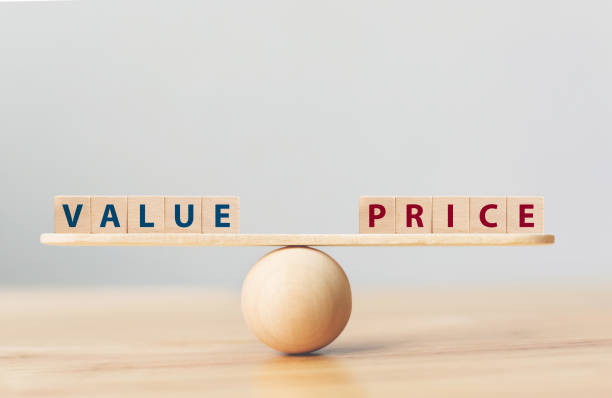When consulting with companies about their growth one of the topics I like to get onto quite quickly is value-based pricing. It appears to be everybody’s eutopia, but it is also one of the most misunderstood in my experience.
When consulting with companies about their growth one of the topics I like to get onto quite quickly is value-based pricing. It appears to be everybody’s eutopia, but it is also one of the most misunderstood in my experience.
It often surfaces in discussions with start-ups or early-stage growth companies because they feel that they are not getting the price that their product or service deserves.
The fact is many of these companies have already put themselves into a situation that will be hard to recover from quickly in terms of pricing because they have already set their pricing too low. This comes about for many reasons, but often it is because they have been desperate to sell something to anybody. They just must have the first sale, and it’s the first sale that starts to cause the problems.
When I advise and teach negotiating skills course I tell people the most important price in any relationship, especially for the seller, is the first one you settle on. This is the one that sets the benchmark, this is where all other pricing stems from. In a year’s time when you have realised that your pricing was too low, and the buyer is in front of you what are you going to use as the basis for your new price? That’s right, it’s the price you charge now. I can hear a few of you talking about open and honest discussions, revealing situations, co-operative negotiations, and all the other ways you agree new pricing, but the fact is the first price that you settled on and have been charging is like a sword that hangs over your head, and it takes skill to remove it. This is one of the key reasons that I talk about value-based pricing, especially to start-ups who haven’t yet made their first sale.
First, let me tell you what I think value-based pricing is.
It is the price your customers will pay for the differentiated worth of your goods or services when compared to your competitors, within a specific sector.
In B2C commerce it’s the price people will pay for extra functionality or benefits. For example, an oven you can remotely control via an app, or a larger capacity freezer. It is often confused in B2B pricing for services as gaining a share of the financial benefits your services deliver to your client. That is “gain share” not value based pricing as far as I am concerned.
With this in mind, and especially if you are starting your business, it is well worth looking at value-based pricing to help you set your first sale price. Here is the way I suggest you do it.
Firstly, make sure you focus on the segment you are trading in. If you are selling a faster motorbike then you want to concentrate and focus your effort on those buyers who want faster motor bikes, not all motor bike riders, or even worse all bike riders. This enables you to evaluate clearly how much your benefit is worth to your potential customer.
Next ask yourself “what product would my potential clients buy if mine was not available?” If you can name the product or service, then this is the one that you use as your benchmark to set your own value-based price. Sadly, this means that if your product is brand new and has no competitors value-based pricing is very difficult if not impossible to achieve.
Next, work out what sets you aside from this competitor. What are your key points of difference? In the case I used, it would simply be that your motorbike is faster.
Finally, you must find out just how much your potential clients would pay for your key point of difference. Often you can do this by market surveys, by talking to potential clients, by using panels. A word of warning with this though. You could find that different people place different value on your key differentiator. I discovered this when looking at a product that could be made truly environmentally friendly. I found out that females seemed to value this benefit more than males, and indeed that disposable income was in fact the biggest factor in people’s willingness to pay extra for an environmentally friendly product. So do your research well and understand your true target market as part of your value-based pricing approach.
There are some words of caution I would like to share with you when setting value-based pricing.
Firstly, it could very well be the case that you have multiple points of difference from your competitor’s goods or services. Do not take each in turn and analyse them in this way and then assume they are simply additive; they will not be. In the real world your multiple points of difference make for a different product or service, you must establish which of those truly add value to clients. I often see this in software companies where developers add function after function, only to find that clients hardly use those additional functions or don’t value them. You need to either identify what is your true key differentiator and seek out its value, or recognise that you have multiple points of difference, all of which add some additional value to a customer, and then determine what that “package” is worth.
Secondly, value-based pricing is based upon your competitors pricing. If they have been stupid in their pricing and are clearly charging too low a price, then value-based pricing will not help you. Always, when you reach a conclusion about your value-based price check it against the bare logic of your costs and margins. If you are still finding that you can’t make money at your value-based price you will have to determine why.
Value based pricing is not a panacea, it is a tool that you can use to set better pricing and make better pricing decisions. When done well it will provide you with clear reasons for your pricing, it will help your sales team’s negotiations and it will help you maintain your position in your market.


